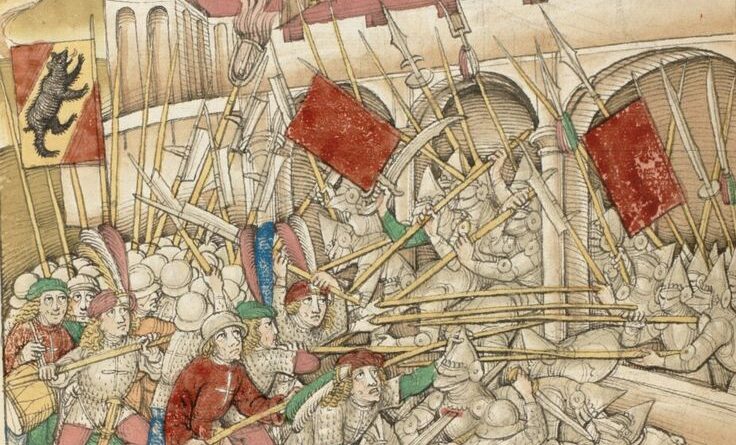Anno Domini 1492, the Swiss confederacy is a fractious alliance of trading cities and mountain farm communities. It has resisted every attempt made by the great nations of powers of Europe to bring it to heel over the last 200 years. Their soldiers are legendary in battle, grim and ferocious they march in great pike blocks to defy the nobility of Europe. They are a beacon of freedom defiance that tears at the hearts of dukes, kings, and emperors alike.
The Swiss fight amongst themselves as much as against their enemies, but so far have always united against foreign threats. Charles the Bold Duke of Burgundy was the last to fall prey to hubris and march into the Swiss territories never to return.
His Hubris cost him his life and that of the vast mercenary army he led into the mountains with him. Burgundy, once one of the wealthiest powers in Europe now lies in economic ruin and its artillery and treasures paraded in even the smallest alpine villages as plunder.
Such victories have made Swiss mercenaries sought after indeed, now making up much of France’s common infantry.

The Mountain Cantons
It was among the craggy peaks, dark winding passes and stormy lakes of the mountain Cantons the confederacy of the Cantons began. According to legend, after hero William Tell slew the Hapsburg representative Albrecht Gessler. After this, the fighting men of the Cantons of Uri, Schwyz, and Oberwalden came together and swore fealty to each standing atop a great rock. To bow to no man but the emperor and to forge an unthinkable world where men were ruled by councils not by kings. As the oath was sworn beacons were lit on the peaks and rugged mountain men descended like wolves on Hapsburg lackeys, tearing them to shreds among the rocky crags of the mountains. This action let loose a spark that spread quickly to the city Cantons and left the Swiss Cantons in unwavering defiance of a world order where men were judged by birth not by deeds. An example that dukes and kings have sought to destroy in the centuries since. The mountain Cantons fighters are few in number but are experienced and stalwart fighters, used to policing the passes that let trade flow through the Alps. It is not uncommon for entire caravans to disappear into the snow. These mountain men lay low shammy and brigand alike with their powerful crossbows. However, it is more than just the mountain men that are to be feared among the foreboding peaks. Stories of dragons, demons, dwarves, and other spirits abound from travelers and the natives as well.
Bern
The Bern is a strong city of craftsmen and their apprentices, they belong to the greatest troublemakers of the confederacy, relentlessly challenging the Hapsburgs to the north, the Burgundians to the west and the Visconti to the south. The crafts guilds march to war under the banners of their guilds, led by their own senior craftsmen, the merchant princes who make up the governing elite of the city. As such they are well-versed in combat. The ranks are filled by the headstrong and zealous apprentices of the city looking to make a name for themselves on the battlefield. Many of their wars have been won by quick marches and cunning strategies.


Zurich
The traders of Zurich are consumed by one central objective, profit. Their rich and well-equipped forces take a ruthless approach to policing along the rivers and lakes that make the trading routes between Italy and the Holy Roman Empire. Zurich’s ambitions have more than once led to conflict within the confederacy, especially with its equally bellicose neighbor Bern. Zurich’s frequent actions make it home to well-equipped and disciplined fighters and many a mercenary adventurer, violence is a commodity too after all, and a very profitable one at that.
Appenzell
At the northernmost edge of the Confederacy, the rugged hill country of Appenzell once fell under the Prince-Abbot of St. Gallen, its cowherds scratching out a meager existence in the poor soil. Until in the early 15th century they rose against the Prince Abbot and crushed his army of Austrian allies unleashing a torrent of destruction, burning more than 50 castles in the space of a week. Now they live by raiding the richer flatlands, the churches of neighboring towns bearing the inscription “protect us from the wrath of the Appenzeller. The Appenzeller may be poor, lightly armored, and lacking the stoic discipline of the other confederates, but in combat they are as wild as the mountains they inhabit. Their fighting forces are frequented by resentful young farmers, veteran raiders, and sharp-eyed shammy hunters.


